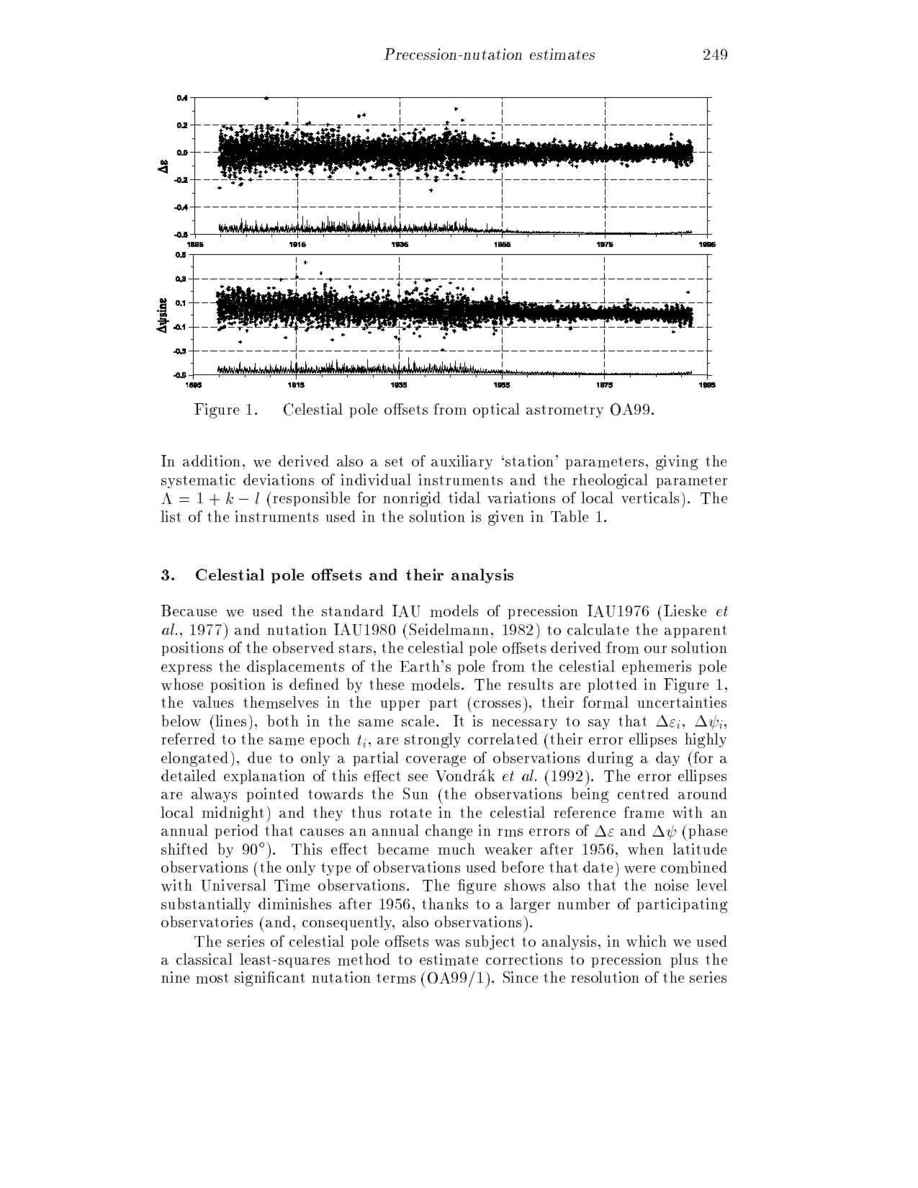
Precession-nutation estimates
249
Figure 1. Celestial pole o sets from optical astrometry OA99.
In addition, we derived also a set of auxiliary `station' parameters, giving the
systematic deviations of individual instruments and the rheological parameter
= 1 +
k
;
l
(responsible for nonrigid tidal variations of local verticals). The
list of the instruments used in the solution is given in Table 1.
3.
Celestial
p ole
o
sets
and
their
analysis
Because we used the standard IAU models of precession IAU1976 (Lieske et
al.
, 1977) and nutation IAU1980 (Seidelmann, 1982) to calculate the apparent
positions of the observed stars, the celestial pole o sets derived from our solution
express the displacements of the Earth's pole from the celestial ephemeris pole
whose position is de ned by these models. The results are plotted in Figure 1,
the values themselves in the upper part (crosses), their formal uncertainties
below (lines), both in the same scale. It is necessary to say that
"
i
,
i
,
referred to the same epoch
t
i
, are strongly correlated (their error ellipses highly
elongated), due to only a partial coverage of observations during a day (for a
detailed explanation of this e ect see Vondrak et al. (1992). The error ellipses
are always pointed towards the Sun (the observations being centred around
local midnight) and they thus rotate in the celestial reference frame with an
annual period that causes an annual change in rms errors of
"
and
(phase
shifted by 90 ). This e ect became much weaker after 1956, when latitude
observations (the only type of observations used before that date) were combined
with Universal Time observations. The gure shows also that the noise level
substantially diminishes after 1956, thanks to a larger number of participating
observatories (and, consequently, also observations).
The series of celestial pole o sets was subject to analysis, in which we used
a classical least-squares method to estimate corrections to precession plus the
nine most signi cant nutation terms (OA99/1). Since the resolution of the series
